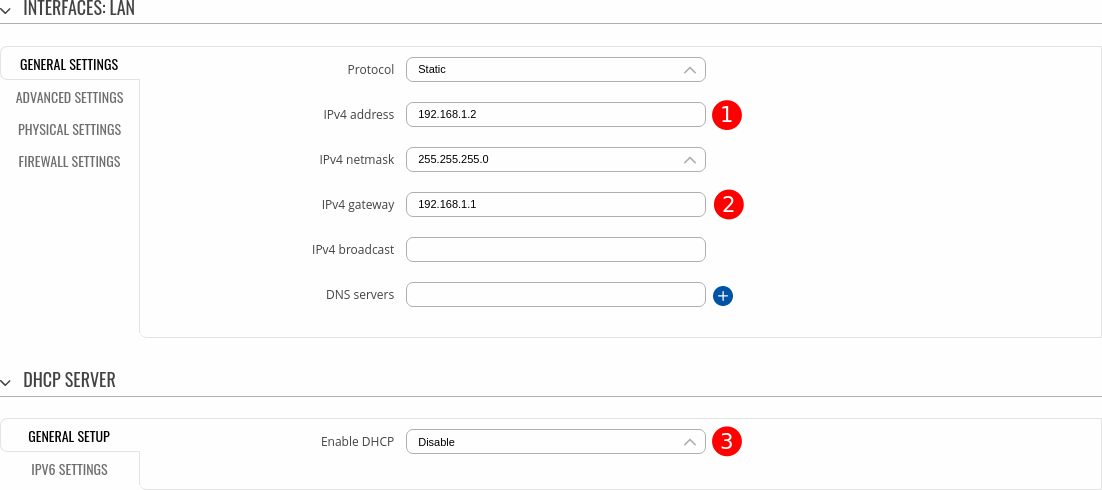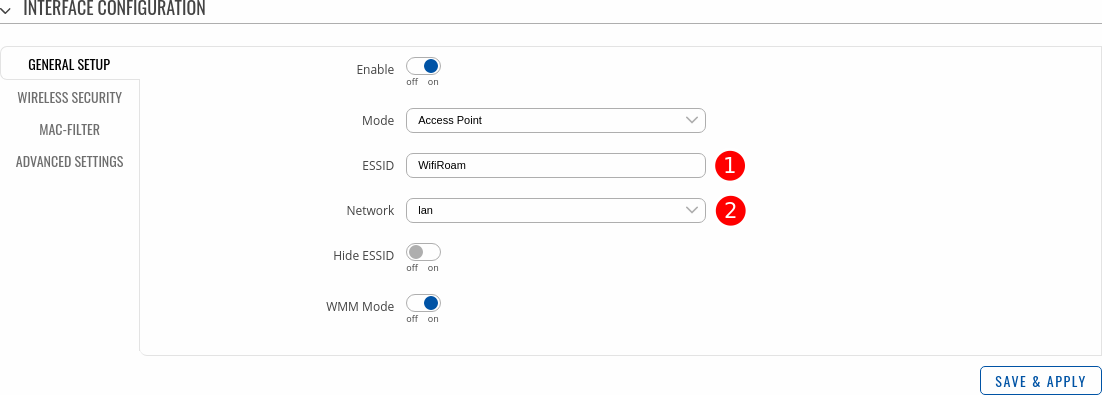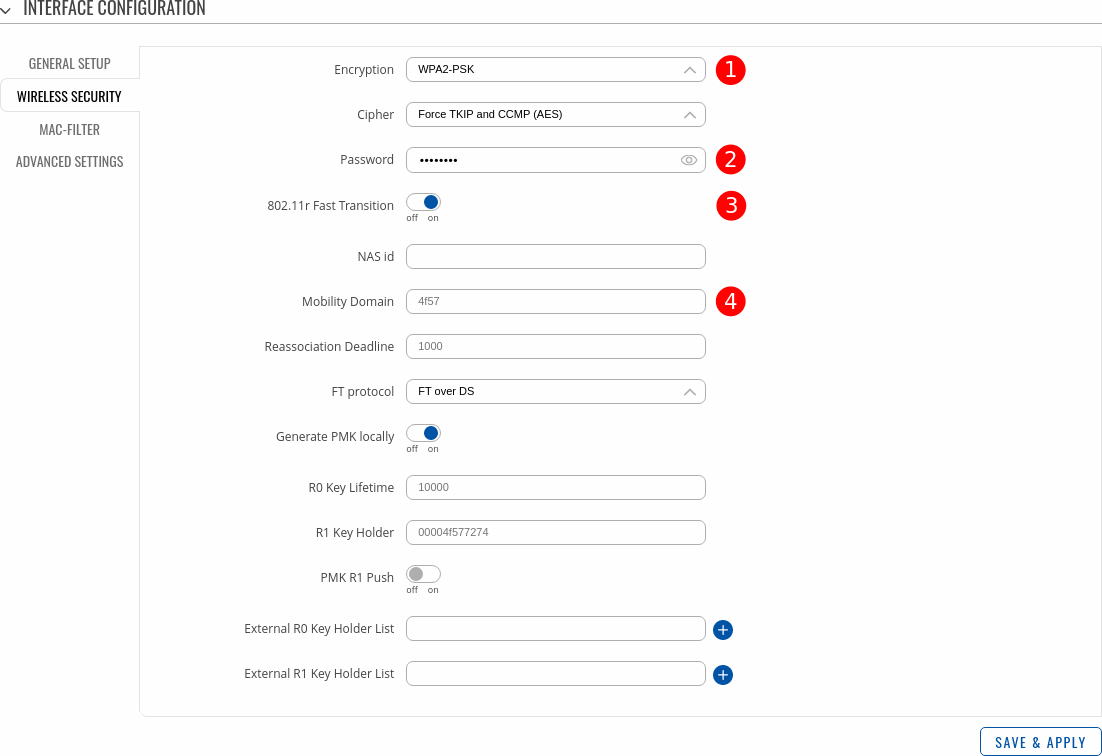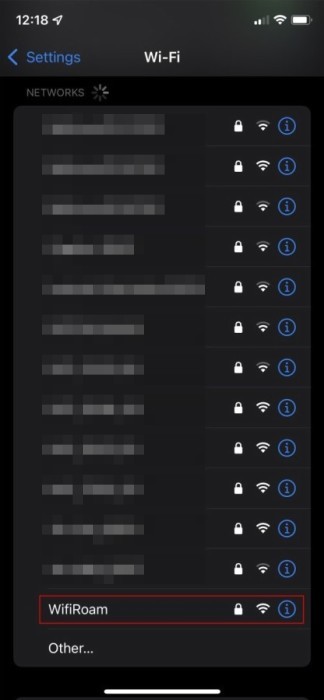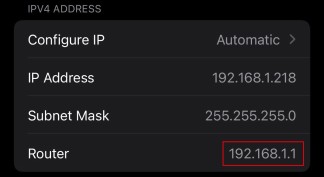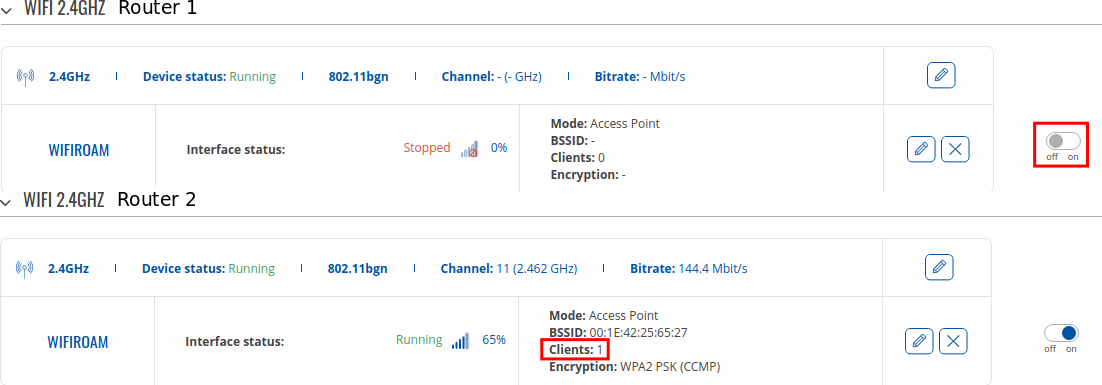WiFi roaming setup for home/small office: Difference between revisions
Gytispieze (talk | contribs) No edit summary |
Gytispieze (talk | contribs) No edit summary |
||
| Line 2: | Line 2: | ||
==Introduction== | ==Introduction== | ||
This article provides a basic configuration example of WiFi roaming. | This article provides a basic configuration example of WiFi roaming. | ||
==Prerequisites== | ==Prerequisites== | ||
* Main gateway with WAN access (RUTXR1 is used in this example) | * Main gateway with WAN access (Any RUTOS router. RUTXR1 is used in this example) | ||
* Access Points (RUTX11 and RUT955 are used in this example) | * Access Points (Any WiFi-capable RUTOS device. RUTX11 (Router 1) and RUT955 (Router 2) are used in this example) | ||
* All devices on <b><i>R_00.02.05.1</i></b> or newer firmware. Legacy firmware is not supported. | * All devices on <b><i>R_00.02.05.1</i></b> or newer firmware. Legacy firmware is not supported. | ||
| Line 18: | Line 15: | ||
==Configuration== | ==Configuration== | ||
[[File:Networking rutos configuration examples wifi roaming configuration scheme | [[File:Networking rutos configuration examples wifi roaming configuration scheme v2.png|border|class=tlt-border]] | ||
===Gateway router=== | ===Gateway router=== | ||
| Line 32: | Line 29: | ||
<li>Login to the router's WebUI, navigate to the '''Network → Interfaces → Edit LAN''' page. Configure as follows:</li> | <li>Login to the router's WebUI, navigate to the '''Network → Interfaces → Edit LAN''' page. Configure as follows:</li> | ||
<ol> | <ol> | ||
<li>Enter IP address on the same subnet as main gateway. We will use 192.168.1.2 for | <li>Enter IP address on the same subnet as main gateway. We will use 192.168.1.2 for Router 1 and 192.168.1.3 for Router 2 in this example.</li> | ||
<li>Enter <b>IPv4 gateway</b>. We will use our gateway router's IP - 192.168.1.1.</li> | <li>Enter <b>IPv4 gateway</b>. We will use our gateway router's IP - 192.168.1.1.</li> | ||
<li>Disable <b>DHCP server</b>.</li> | <li>Disable <b>DHCP server</b>.</li> | ||
| Line 80: | Line 77: | ||
[[File:Networking rutos configuration examples wifi roaming testing 1 v1.png|border|class=tlt-border]] | [[File:Networking rutos configuration examples wifi roaming testing 1 v1.png|border|class=tlt-border]] | ||
Additionally, we can see that there is a client connected | Additionally, we can see that there is a client connected in Router 1 WebUI. There should be working internet connection on our wireless device (phone). | ||
[[File:Networking rutos configuration examples wifi roaming testing 2 v1.png|border|class=tlt-border]] | [[File:Networking rutos configuration examples wifi roaming testing 2 v1.png|border|class=tlt-border]] | ||
We can also disable the wireless AP on | We can also disable the wireless AP on Router 1 to see if our wireless device (phone) will automatically switch to the other AP and retain internet connection. | ||
[[File:Networking rutos configuration examples wifi roaming testing 3 | [[File:Networking rutos configuration examples wifi roaming testing 3 v2.png|border|class=tlt-border]] | ||
==Troubleshooting== | ==Troubleshooting== | ||
Revision as of 12:12, 2 December 2021
Main Page > General Information > Configuration Examples > WIFI > WiFi roaming setup for home/small officeIntroduction
This article provides a basic configuration example of WiFi roaming.
Prerequisites
- Main gateway with WAN access (Any RUTOS router. RUTXR1 is used in this example)
- Access Points (Any WiFi-capable RUTOS device. RUTX11 (Router 1) and RUT955 (Router 2) are used in this example)
- All devices on R_00.02.05.1 or newer firmware. Legacy firmware is not supported.
Before you start configuring the router turn on "Advanced WebUI" mode. You can do that by clicking the "Basic" button under "Mode", which is located at the top-right corner of the WebUI.
Configuration
Gateway router
- Login to the router's WebUI, navigate to the Network → Interfaces → Edit LAN page. Enter main gateway's IP address and save. We will leave it default (192.168.1.1) for this example.
Access Points
- Connect your AP to the gateway router using LAN to LAN connection.
- Login to the router's WebUI, navigate to the Network → Interfaces → Edit LAN page. Configure as follows:
- Enter IP address on the same subnet as main gateway. We will use 192.168.1.2 for Router 1 and 192.168.1.3 for Router 2 in this example.
- Enter IPv4 gateway. We will use our gateway router's IP - 192.168.1.1.
- Disable DHCP server.
- Alternatively, instead of manually configuring each interface, you can select DHCP Protocol and let it decide the address.
Note: The configuration below applies to all APs and must match:
- Navigate to the Network → Wireless → Edit AP page. Configure an existing AP follows or create a new one:
- Change AP SSID. We will use "WifiRoam" for this example.
- Select Network - lan
- Navigate to the Wireless Security section. Configure as follows:
- Choose encryption. We will leave default WPA2-PSK.
- Enter the password.
- Enable 802.11r Fast Transition
- Enter the Mobility Domain. Leave empty or choose a 4 character hexadecimal ID, i.e. abcd
Results
The single AP should now be visible on your WiFi devices (an iOS phone is used in this example).
Testing the setup
If you followed all the steps correctly, WiFi roaming should now function accordingly. You may test it by connecting to the WiFi network. You should see that the gateway IP is our main gateway router's LAN IP.
Additionally, we can see that there is a client connected in Router 1 WebUI. There should be working internet connection on our wireless device (phone).
We can also disable the wireless AP on Router 1 to see if our wireless device (phone) will automatically switch to the other AP and retain internet connection.
Troubleshooting
- Make sure you have no other devices with a DHCP server on the same subnet as main gateway router.
- Make sure each Access Point is configured identically.
- We cannot guarantee full wireless coverage for each individual setup, therefore if you are losing the connection, make sure that the physical locations of each AP are set up accordingly.




